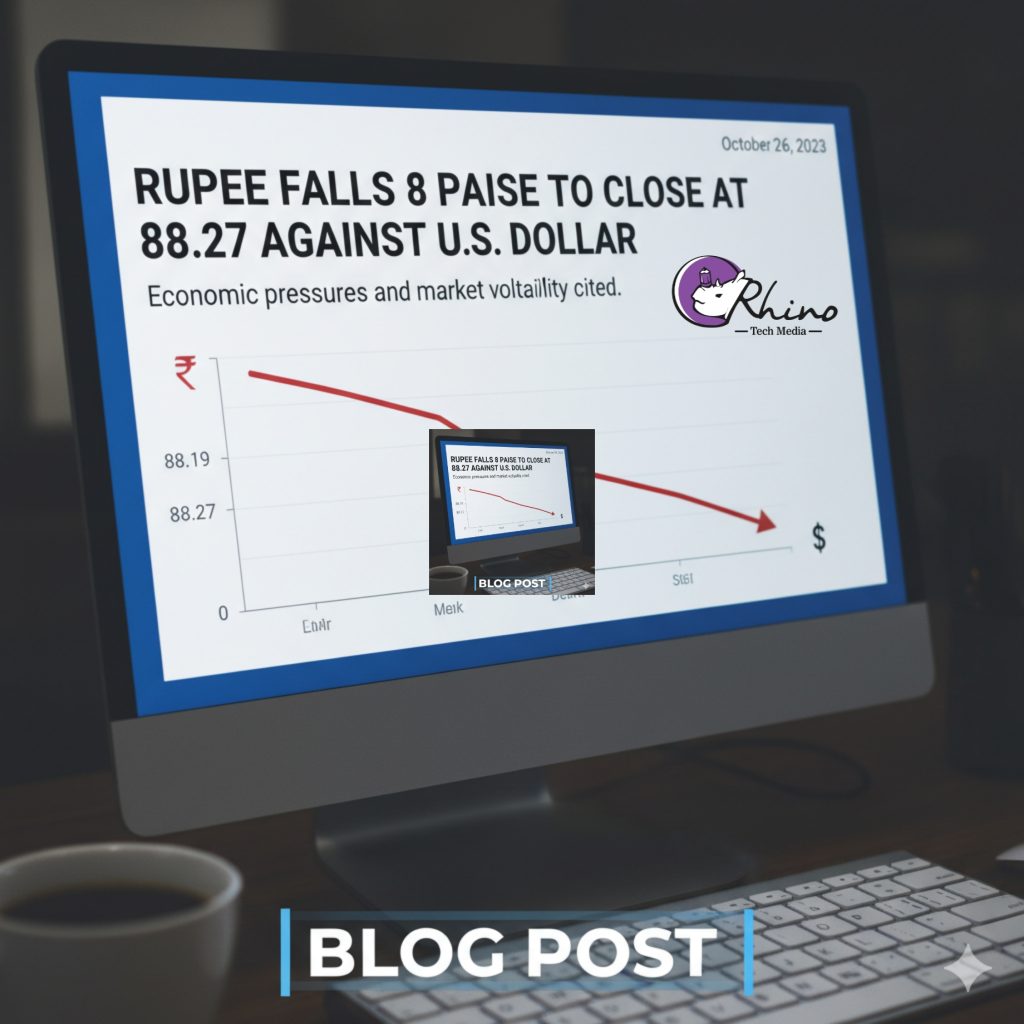On Tuesday, the Indian rupee slipped by 8 paise to settle at ₹88.27 against the U.S. dollar in the inter-bank foreign exchange market. This modest depreciation reflects a combination of domestic and external factors that continue to weigh on the currency’s performance.
To begin with domestic developments, weak performance in equity markets put pressure on the rupee. The key domestic stock gauge, the Nifty 50 index, declined by nearly 30 points, signalling risk-aversion among investors. Simultaneously, foreign institutional investors (FIIs) registered net outflows from Indian equities, which reduces demand for the rupee. On the day in question, equities worth around ₹55.58 crore were sold by FIIs. Importer demand for dollars towards month-end adds further pressure, as importers sell rupees and buy dollars to settle bills, nudging the rate upward.
On the external front, a few counter-vailing forces partly cushioned the fall. For one, the global oil benchmark (Brent crude) eased by about 1.74 per cent to approximately US$64.48 per barrel, which moderates India’s import bill (given India is a net importer of oil) and eases one source of rupee pressure. Also, the U.S. dollar index was marginally weaker—falling by 0.09 per cent to 98.69—offering some relief to the rupee. Nonetheless, these supportive factors were not strong enough to offset the broader headwinds.
In terms of price action, the rupee opened the day at around ₹88.34 and oscillated between ₹88.23 and ₹88.40 before settling at ₹88.27. The previous day, it had plunged by 36 paise to close at approximately ₹88.19, which suggests there is ongoing depreciation pressure rather than a one-off blip.
Looking ahead, analysts expect the rupee to trade with a “slight negative bias,” reflecting weak domestic equities and import-related dollar demand. But they also point to potential support if positive developments emerge—such as a trade deal between India and the United States or improved foreign capital flows. For example, one research analyst, Anuj Choudhary of Mirae Asset ShareKhan, estimated a likely trading range of ₹87.90–₹88.60 for the near term.
In conclusion, the rupee’s decline to ₹88.27 underscores the persistent pressures from weak equity markets, capital outflows and import-dollar demand—even as some moderating factors such as lower crude oil prices and a softer dollar provide limited relief. For policymakers and market watchers, the key will be to monitor how external flows behave, whether the rupee stabilises or continues its weakening trend, and how India’s external account and import dynamics evolve. Absent a meaningful improvement in these areas, the rupee may remain under downward pressure in the near term.

